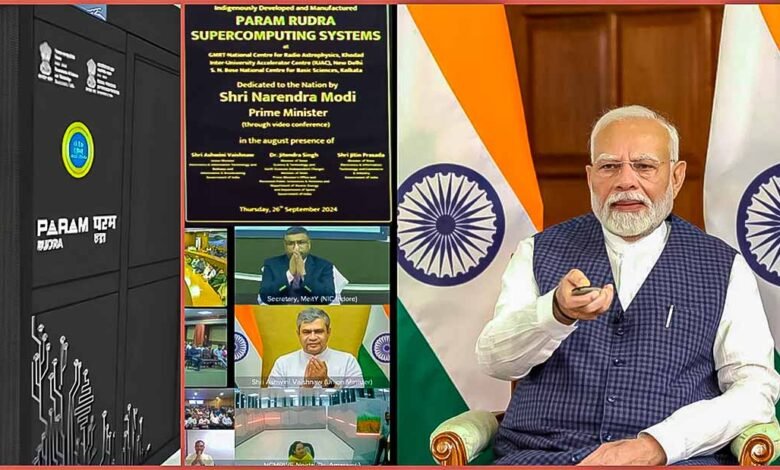
Param Rudra Supercomputer: India’s First Fully Indigenous Supercomputer
Prime Minister Narendra Modi on Thursday inaugurated three Param Rudra Supercomputers, marking a historic moment for India’s technological capabilities. These supercomputers are entirely indigenous—from design to manufacturing—and have been developed as part of the National Supercomputing Mission (NSM). The inauguration of these cutting-edge machines is expected to have a significant impact on artificial intelligence (AI) and machine learning (ML) advancements in scientific research and industry.
PM Modi Launches 3 Param Rudra Supercomputers
The three Param Rudra supercomputers were launched with a vision to strengthen India’s research capabilities. During the online inauguration, Prime Minister Modi emphasized the importance of these fully indigenous supercomputers in promoting AI and ML, which are key for research and technological development. The Union Minister for Information and Broadcasting, Ashwini Vaishnav, along with directors and scientists from various research institutions, participated in the event.
National Supercomputing Mission (NSM): A Step Towards Technological Independence
Developed under the National Supercomputing Mission (NSM), these supercomputers aim to boost scientific research in educational institutions, research centers, and industries across India. The mission, led by Pune’s ‘Centre for Development of Advanced Computing’ (C-DAC) and Bengaluru’s ‘Indian Institute of Science’ (IISC), has successfully produced indigenous supercomputers at a cost of approximately Rs 130 crore.
Where Are the Param Rudra Supercomputers Installed?
Among the three supercomputers, one has been installed at the Giant Metrewave Radio Telescope (GMRT) in Pune, with a one-petaflop capacity. Another, with a three-petaflop capacity, has been set up at the Inter-University Accelerator Center (IUAC) in Delhi, while the S.N. Bose National Centre for Basic Sciences houses an 838-teraflop Param Rudra supercomputer. This accomplishment is part of the larger mission to deploy a total of 32 petaflop capacity supercomputers across India in five years.
Boosting Artificial Intelligence and Research
Prime Minister Modi dedicated these supercomputers to young Indian scientists, emphasizing their crucial role in driving advancements in AI and machine learning. These technologies will be pivotal in accelerating scientific discoveries and breakthroughs in fields such as climate modeling, computational biology, and space research. The supercomputers will also enhance India’s capacity to handle large-scale data processing, further positioning the country as a leader in global scientific research.




